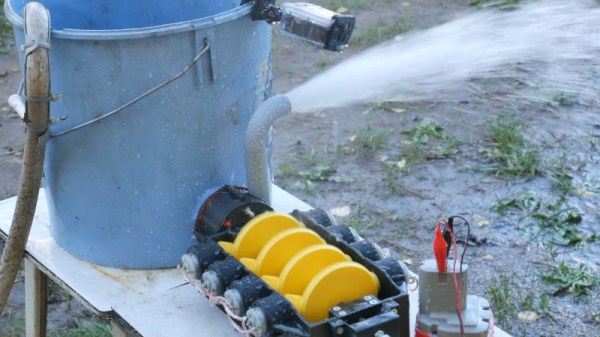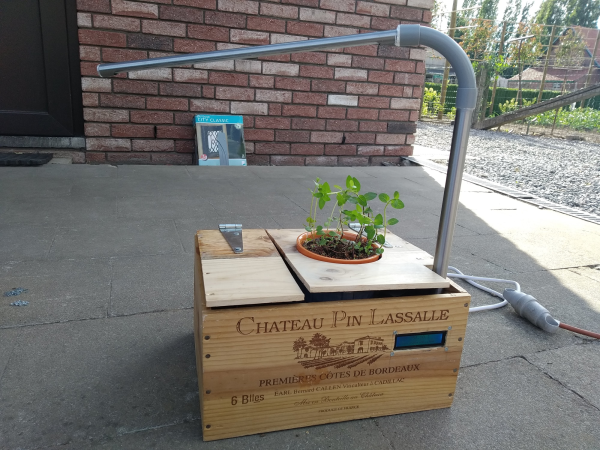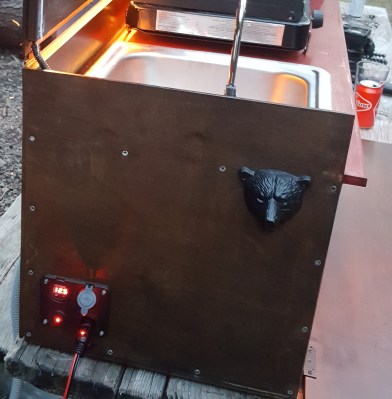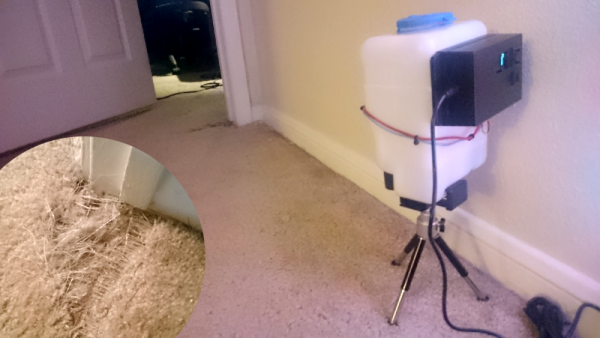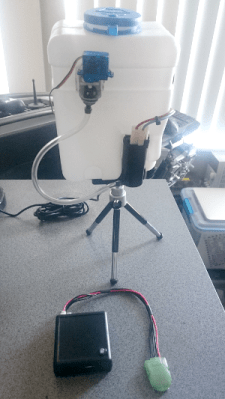Once upon a time, 3D printing was more of a curiosity than a powerful tool, with many printing trinkets and tchotchkes rather than anything of real use. However, over the years as technology and techniques have progressed, we now see more application-ready builds. This water pump from [Let’s Print] is a great example.
The pump consists of two major pieces – a drive unit, and an impeller. The drive unit consists of a gearbox that combines the power of eight electric motors, driving a single shaft. This is all achieved with striking yellow ABS gears in a black housing. The build video does a great job of explaining how to make the project work with different motors, and how to properly use the bolt adjuster to set the backlash on the gear train. The drive unit is then used to turn a 3D-printed impeller pump which is capable of delivering a great deal of water very quickly.
When fired up, the leaky assembly makes an awful racket and a huge mess, but sure as heck shifts a lot of water while it does so. Watching the water spray off the gears as it leaks through the bearings is a great sight, and it’s clear that the device works well. We’d love to see a cost and performance analysis of this pump versus a commercial offering.
While it’s certainly not the most rugged build, it’s a fun one that nevertheless gets the job done. We’d love to see this running a foam machine or a classic slip and slide. Video after the break.
Continue reading “Eight Motors Can Sure Pump A Lot Of Water”

